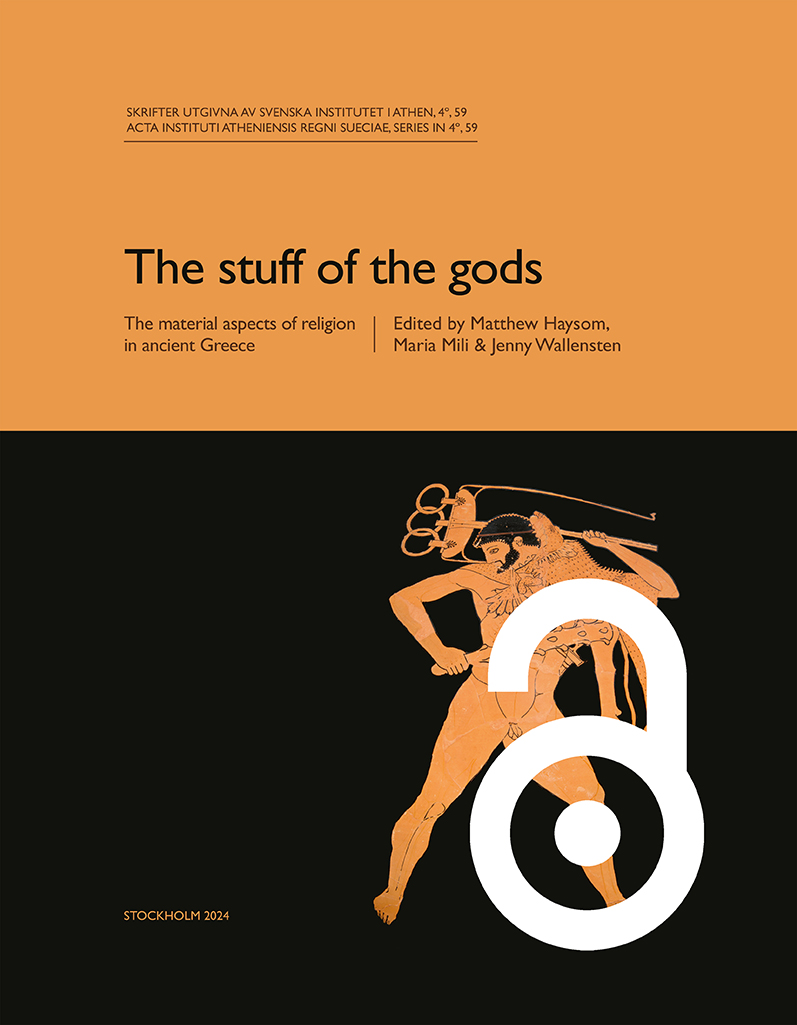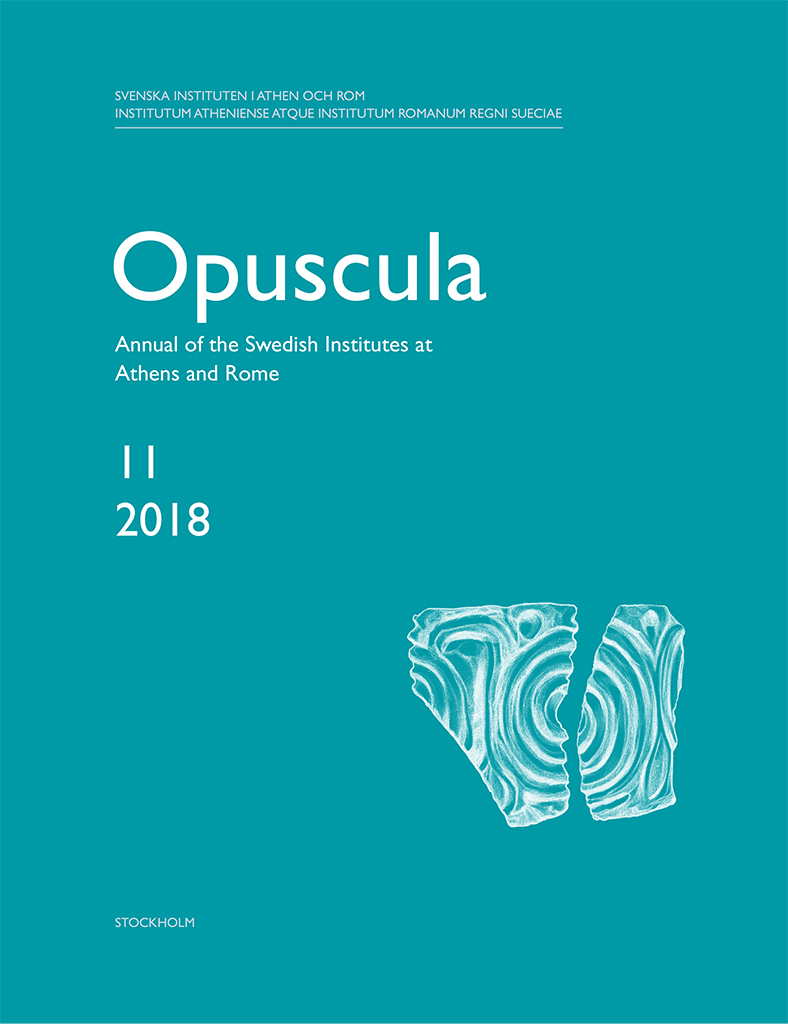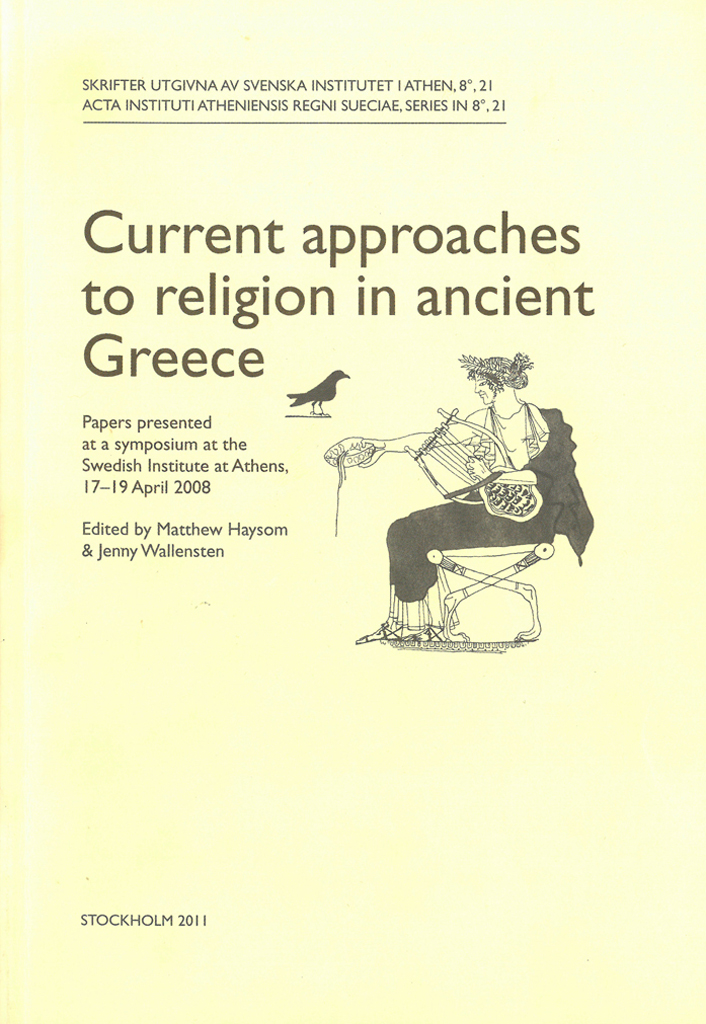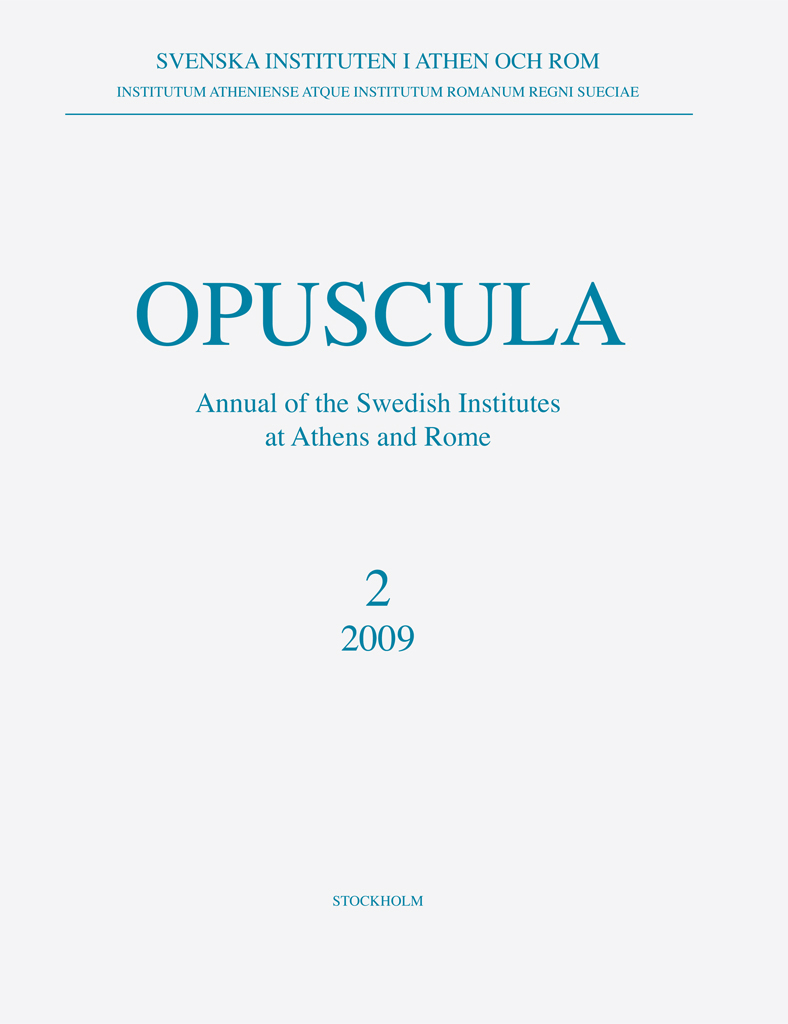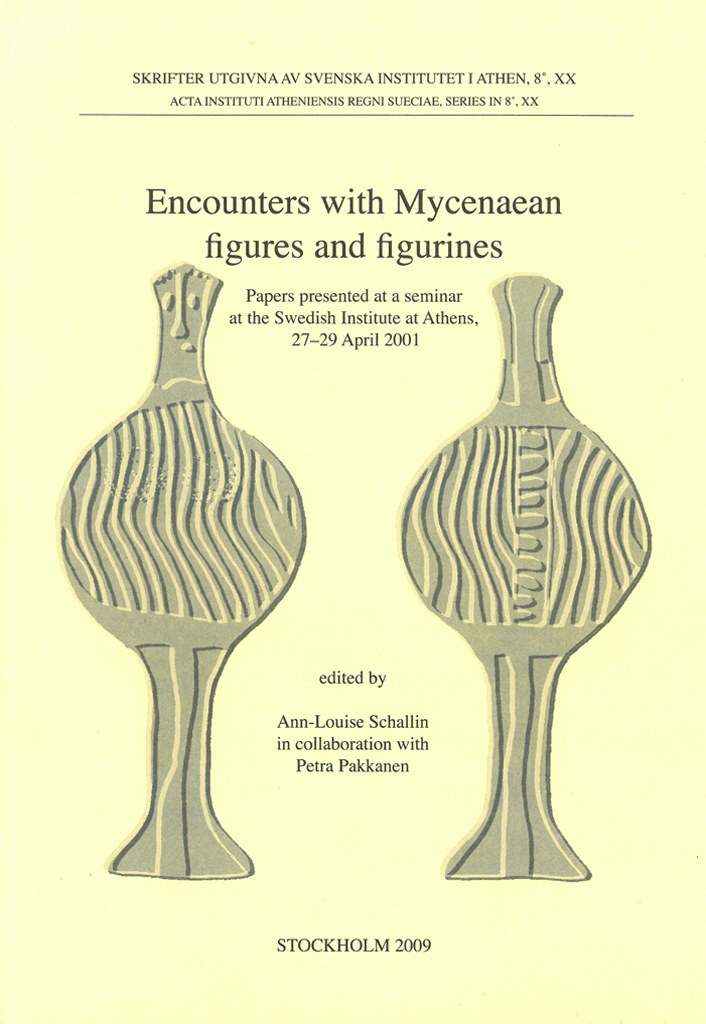Published by the Swedish Institute at Athens. Distributed by Eddy.se AB. All content is available with open access, use links below. The stuff of the gods. The material aspects of religion in ancient Greece Edited by Matthew Haysom, Maria Mili & Jenny Wallensten https://doi.org/10.30549/actaath-4-59 The “material turn” in the humanities and social sciences has brought about an expanded understanding of the material dimension of all cultural and social phenomena. In the Classics it has resulted in the breaking down of boundaries within the discipline and a growing interest in materiality within literature. In the study of religion cross-culturally new perspectives are emphasising religion as a material phenomenon and belief as a practice founded in the material world. This volume brings together experts in all aspects of Greek religion to consider its material dimensions. Chapters cover both themes traditionally approached by archaeologists, such as dedications and sacred space, and themes traditionally approached by philologists, such as the role of objects in divine power. They include a wide variety of themes ranging from the imminent material experience of religion for ancient Greek worshippers to the role of material culture in change and continuity over the long term. Chapter abstracts and author affiliations…
Opuscula is published by the Swedish Institutes at Athens and Rome, with the aid of a grant from the Swedish Research Council. Distributed by Eddy.se AB. View journal at ERIH PLUS. All content available with open access. Book reviews Floris van den Eijnde (Utrecht University) | X. Charalambidou & C. Morgan (eds.), Interpreting the seventh century BC. Tradition and innovation, Oxford: Archaeopress 2017. Viii + 460 pp., illustrated throughout in colour and black and white. ISBN 978-1-78491-572-8. https://doi.org/10.30549/opathrom-11-10 Petra Pakkanen (The Open University in London) | A. Weststeijn & F. Whitling, Termini. Cornerstone of modern Rome (Papers of the Royal Netherlands Institute in Rome, 65), Rome: Edizioni Quasar 2017. 162 pp., 120 figs. ISBN 978-88-7140-813-2. https://doi.org/10.30549/opathrom-11-11 Patrik Klingborg (Uppsala University) | K. Wellbrock, Die innerstädtische Wasserbewirtschaftung im hellenistisch-römischen Pergamon (Schriften der Deutschen Wasserhistorischen Gesellschaft—DWhG—e.V., Sonderband, 14), Siegburg: DWhG 2016. 370 pp., 80 pls. ISBN 978-3-86948-521-8. https://doi.org/10.30549/opathrom-11-12 Paavo Roos (Lund University) | R. Fleischer, Die Felsgräber der Könige von Pontos in Amasya (Istanbuler Forschungen, 56), Tübingen: Ernst Wasmuth 2017. x + 155 pp., 122 figs. ISBN 978-38-03-01777-2. https://doi.org/10.30549/opathrom-11-13 Gullög Nordquist (Uppsala University) | A. Bellia & C. Marconi (eds.), Musicians in ancient coroplastic art. Iconography, ritual contexts, and functions (Telestes. Studi…
Opuscula is published by the Swedish Institutes at Athens and Rome, with the aid of a grant from the Swedish Research Council. Distributed by Eddy.se AB. View journal at ERIH PLUS. All content available with open access. Is it possible to believe in a syncretistic god? A discussion on conceptual and contextual aspects of Hellenistic syncretism By Petra Pakkanen Abstract This article will look into the phenomenon of syncretism from two different points of view. Firstly, syncretism will be discussed from a conceptual perspective in relation to elaborations on belief, an equally perplexing concept in the studies of ancient Greek religion. Secondly, a very selective example of the syncretism between the goddess Demeter and Isis as an object of veneration in Ptolemaic Egypt will be looked at more closely in order to bring the conceptual perspective into closer contact with the contextual one. It will be argued that syncretism can be regarded both as an essence of polytheistic religious systems in particular, and as a process of syncretization. Once a metaphorical understanding of syncretism is added to these views, believing in a syncretistic deity (Demeter-Isis in our case) appears doubtful since a new entity in a polytheistic belief-system would have…
Published by the Swedish Institute at Athens. Distributed by Eddy.se AB. Current approaches to religion in ancient Greece. Papers presented at a symposium at the Swedish Institute at Athens, 17–19 April 2008 Edited by Matthew Haysom & Jenny Wallensten Abstract In recent years Greek religion has emerged as one of the main topics for the study of ancient Greek society as a whole. This flourishing interest is certainly due to the recognition of the centrality of religion to Greek culture: religious beliefs and practices were connected to almost every aspect of the Greek world. This volume brings together fourteen contributions from a group of upcoming international scholars, presented at a conference held in the Swedish Institute at Athens and the British School at Athens in 2008. The papers take a wide range of approaches: archaeological, epigraphic, iconographical, philological and historical. They demonstrate the diversity of the subject, covering such issues as nineteenth-century historiography, cult epithets, the pantheon, regionalism, polis religion, the performance of ritual, the use of music in ritual, the accessibility of sacred space, and the visual aspects of dedications. The contributions bring new theoretical perspectives, seek to better understand ritual, and highlight the variety of Greek religion. Contents…
Opuscula is published by the Swedish Institutes at Athens and Rome, with the aid of a grant from the Swedish Research Council. Distributed by Eddy.se AB. View journal at ERIH PLUS. All content available with open access. Report on the excavations in the years 2007 and 2008 southeast of the Temple of Poseidon at Kalaureia By Arto Penttinen and Berit Wells (†). With contributions by Dimitra Mylona, Petra Pakkanen, Jari Pakkanen, Arja Karivieri, Anne Hooton and Emanuel Savini, and with an appendix by Tatiana Theodoropoulou. Abstract Archaeological material ranging in date from the Early Bronze Age to Late Antiquity was found in 2007 and 2008 in the excavations in Area H to the south and southeast of the Temple of Poseidon. Finds datable to the periods of major change in the Sanctuary—the Late Archaic and the Early Hellenistic—illuminate the character of the change. In the Late Archaic period an attempt to erect a votive column at the site was for some reason given up, and drums of large dimensions were left visible, possibly as a reminder of the failure. The construction of a monumental drain next to the Archaic peribolos of the Temple of Poseidon in the early third century…
Published by the Swedish Institute at Athens. Distributed by Eddy.se AB. Encounters with Mycenaean figures and figurines. Papers presented at a seminar at the Swedish Institute at Athens, 27–29 April 2001 Edited by Ann-Louise Schallin & Petra Pakkanen Abstract This volume presents fourteen articles which discuss Mycenaean figurines from various points of view. They focus on different aspects of the figurines, elaborating on their function, contextual characteristics, production, use-life, classification, topography, and history of scholarship. The articles are based on papers given at a workshop at the Swedish Institute at Athens in April 2001 entitled ‘Cultic Space and Mycenaean Figurines’. The idea of having a workshop arose from the fact that several of the participants were involved at the time with the documentation of various figurine types from the so-called Potter’s Workshop at Mastos in the Berbati Valley in the Argolid. The number and variety of the Mycenaean figurines from Mastos is impressive, particularly as the excavation had covered only a small area. The excavator, Å. Åkerström, proposed that the site had a cultic function in addition to its role as a production centre. In order to better understand the characteristics and identity of Mastos, scholars were invited to discuss…
Published by the Swedish Institute at Athens. Distributed by Astrom Editions. Opuscula Atheniensia. Annual of the Swedish Institute at Athens 25–26, 2000–2001 Contents Therese Åkerstedt, ‘Hellenistic-Roman chamber toms at Milas: Swedish excavations 1938’, pp. 9–23 Yvonne Backe-Forsberg, Christina Risberg & Yannis Bassiakos, ‘Metal-working at Asine. Report on the remains of iron production from the Barbouna area and the area east of the Acropolis’, pp. 25–34 Katie Demakopoulou, Nicoletta Divari-Valakou, Paul Åström & Gisela Walberg, ‘Work in Midea 1997–1999: excavation, conservation, restoration’, pp. 35–52 Niklas Hillbom, ‘Minoan and Eastern Mediterranean games and game boards: a history of research’, pp. 53–65 Kerstin Höghammar, ‘A note on the border conflict between Argos and Sparta in the second century B.C.’, pp. 67–70 Petra Pakkanen, ‘The relationship between continuity and change in Dark Age Greek religion: a methodological study’, pp. 71–88 ‘Introduction: Mycenaean pictorial pottery’, p. 89 Vassos Karageorghis, ‘The Mycenaean pottery of the pictorial style: achievements and perspectives’, pp. 91–93 Hans Mommsen & Joseph Maran, ‘Production places of some Mycenaean pictorial vessels: the contribution of chemical pottery analysis’, pp. 95–106 Lucia Vagnetti, ‘Preliminary remarks on Mycenaean pictorial pottery from the central Mediterranean’, pp. 107–115 Miscellanea Evangelos Kyriakidis, ‘Pithos or baetyl? On the interpretation of…

